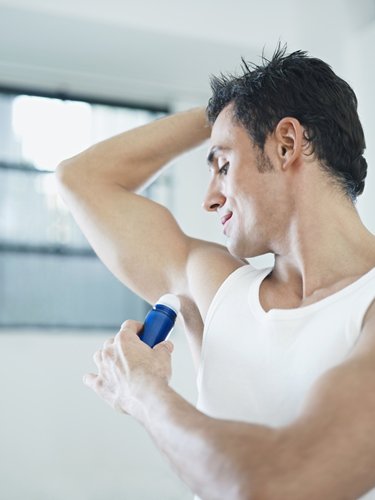Antiperspirant and deodorant are commonplace in modern society. Before heading to the lab or leaving your house, you likely apply a stick, roller or gel deodorant to keep yourself sweat-free and smelling fresh throughout the day, but this was not always the case. For millennia people would bath infrequently, with only perfumes and fragrances to prevent natural odor.
It was not until the late 1800s that commercially available, chemically-produced deodorants first came into existence. Today, many deodorants and antiperspirants work together as one unit to prevent sweat and protect against bad odors. Whether you do research with personal care products or you are just a curious consumer, here are chemistry details that make deodorant work.
Aluminum compounds
Aluminum compounds are critical to the success of antiperspirant deodorants. The ions of aluminum compounds are drawn into the epidermis. This causes cells to fill with water and swell, blocking the ducts that secrete sweat, HowStuffWorks explained. Common compounds used as active ingredients in antiperspirant include aluminum chlorohydrate, aluminum zirconium tricholorohydrex glycine, aluminum chlorohydrate, aluminum hydroxybromid.
Some people have been critical of the use of aluminum in antiperspirants because it may be absorbed into people’s systems and lead to negative health effects, such as Alzheimer’s disease. But, as the American Chemical Society explained, this correlation between antiperspirants and Alzheimer’s is not true.
“In the 1970s, some researchers began to fear that aluminum in antiperspirants could lead to Alzheimer’s disease,” the ACS explained. “Subsequent studies have convinced the American Alzheimer’s Association, a patient advocacy group, and the [U.S.] Food & Drug Administration, which regulates antiperspirants, that the connection between aluminum in antiperspirants and neurodegeneration is a myth.”
Other criticisms have tied aluminum in deodorant to breast cancer, but the FDA monitors active ingredient concentrations heavily.
Cyclomethicone
When deodorant was first invented, it was not in a convenient plastic stick tube. People had to use cotton swabs to wipe the solution on themselves. However, as the ACS explained, these solutions were largely made of acid or alcohol, which would dry out skin, cause irritation and eliminate odor at the cost of physical discomfort.
It was not until the 1970s that deodorant producers found a quick-drying chemical that would not irritate skin. It is called cyclomethicone and is used to this day.
Known as 2,2,4,4,6,6,8,8,10,10-decamethyl-1,3,5,7,9,2,4,6,8,10-pentaoxapentasilecane or C10H30O5Si5, cyclomethicone is an odorless, colorless silicone compound that is used in a variety of personal care products. Unlike aluminum compounds, cyclomethicone is too large to pass through the initial layer of skin, so there is no risk of absorption. In Europe, cyclomethicone is regulated for environmental concerns rather than personal health worries.
Antibacterial ingredients
Just as aluminum compounds are the antiperspirant active ingredient in deodorants, antibacterials are the active aspect of odor reduction. Antibacterial ingredients work to eliminate the bacteria that cause bad odors from areas where sweat is common. Many types of deodorants use alcohol ingredients that kill bacteria, while others use artificial chemicals such as triclosan.
Triclosan is used in a number of personal care products including toothpaste. Many people have been critical of this chemical in over-the-counter products. However, the FDA explained that it is not known to cause harm to humans and has been proven to be beneficial in some circumstances, such as fighting gingivitis.
Other ingredients
The other chemicals used in deodorants vary from brand to brand. The humectant propylene glycol is used to prevent the product from drying out, triethanolamine and diethanolamine may be used for pH control, and other color and scent-specific chemicals may also be used.
Like any personal care products, deodorants and antiperspirants are made from a number of active and inactive ingredients that work toward a common cause and a longer shelf life. Please visit our products’ page to see a list of ingredients.



